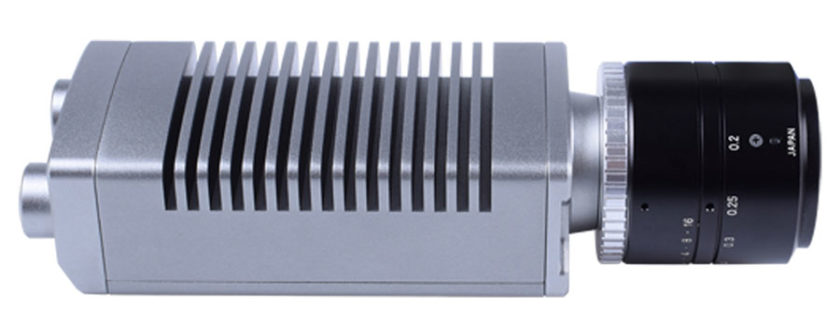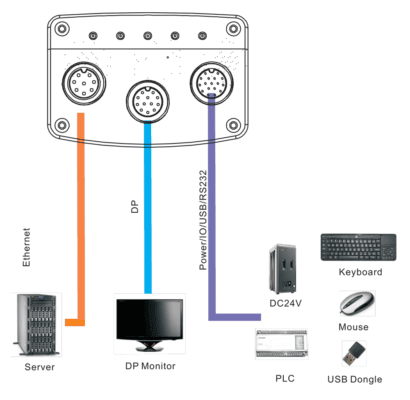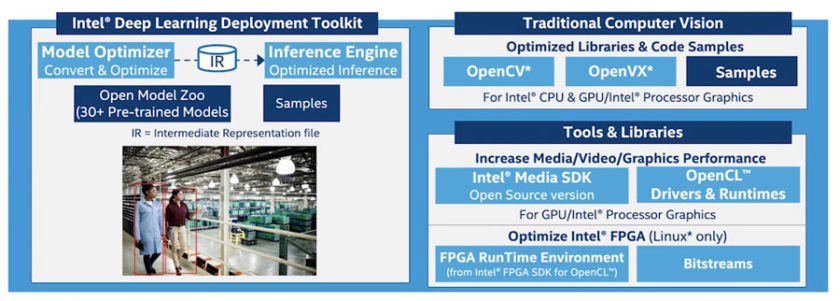Building Blocks for Machine Vision Design

In manufacturing, machine vision inspection systems use sub-pixel perception to identify product defects in real time, allowing them to check hundreds of items per minute. Compared to human inspectors, the technology reduces defects, increases yield, and allows production automation systems to operate at a high-speed pace.
For system integrators, the machine vision revolution represents a massive opportunity. But building differentiated solutions quickly is a significant challenge because the systems are so complex. As a baseline, it requires:
- Lighting—To illuminate the object being inspected
- Lens—For capturing highest-quality images
- High-Resolution Image Sensor—To digitize the captured image
- Vision Processor—To analyze the digitized image using complex algorithms
- Communication—To relay findings to systems like PLCs, analytics platforms, etc.
Sourcing and integrating these components is a time- and resource-intensive task, and that’s without considering packaging, enclosures, and so on. In addition, many machine vision systems must integrate with legacy factory equipment, incorporate new enterprise IoT capabilities, and employ artificial intelligence (AI) to make them even more efficient.
In manufacturing, machine vision inspection systems use sub-pixel perception to identify product defects in real time, allowing them to check hundreds of items per minute. @frtxxl @insightdottech
Smart Camera Building Blocks
Systems integrators need solutions that accelerate machine vision system design but still allow them to differentiate and add value through application software.
For instance, the RVS-2100 smart camera solution from Shenzhen FutureRobot Technology Co. provides all of the key components for a modern 120-fps machine vision solution in a compact, ruggedized package (Figure 1). And it’s available in an off-the-shelf development kit that allows system integrators to innovate on top of baseline technologies.

Specifically, the kit includes:
- IP67-rated housing for deployment in harsh environments
- Pulse width modulation (PWM) optics control for fine-grained lighting
- High-resolution optical lens
- MIPI global shutter image sensor with 1 MP resolution
- Quad-core Intel Atom® processor with 2M cache for high-speed image processing
- Integrated FPGA that supports application-specific I/O as well as image pre- and post-processing
- RS-232, USB, UART, DisplayPort, and Gigabit Ethernet communications via rugged M12 connectors
In particular, the broad I/O support and interface flexibility enabled by the FPGA allow system integrators to quickly define unique implementations for specific use cases. For example, communications and control can be established between the smart camera and human-machine interfaces (HMIs) or programmable logic controllers (PLCs). The Gigabit Ethernet interface can even be used to support an additional high-throughput slave camera for multi-angle installations (Figure 2).

The Software Side of Machine Vision
On the software side, the smart camera solution provides the flexibility to develop applications in the integrator’s environment of choice. For starters, the camera is compatible with both Windows 10 and Linux, and supports a wide variety of open APIs that enable integration with Google Cloud, Alibaba Cloud, and a variety of other platforms and services.
On the application enablement front, software developed in Halcon, LabVIEW, or the Intel® OpenVINO™ Toolkit programming paradigms can be engineered on a separate PC and then seamlessly migrated to the RVS-2100 platform. This flexibility is key not only because it uses visual programming models that domain experts are already familiar with, but also because it provides a path forward to AI-enabled image recognition and object detection.
The OpenVINO Toolkit is a development tool that optimizes computer vision algorithms built in frameworks like Caffe and TensorFlow for multiple Intel® processing platforms. Using an array of libraries such as OpenCV and the OpenVX API, image processing algorithms can be accelerated on platforms like the Intel Atom (Figure 3).

All of this software functionality is packaged in a demo SDK delivered with the RVS-2100 smart camera kit that helps system integrators accelerate the development of machine vision applications like barcode scanning.
Usecase: Faster Barcode Reading
According to FutureRobot, barcode scanning is used in 80 percent of Chinese manufacturing facilities. But different factories use different barcode schemes that are specific to their operation. Of course, objects and materials from one factory make their way in and out of several other factories and warehouses throughout the supply chain.
To integrate incoming items into a new factory environment, the original barcodes must be scanned and matched with corresponding ones in the current facility. A new barcode is then printed, applied to the item, and then verified. Today this is a manual process that is extremely time-consuming and error-prone.
To scale operations, manufacturers are now using enterprise resource planning (ERP) systems that house databases full of foreign barcodes. With fast, accurate readers capable of cross-referencing these ERP systems, the process of scanning, printing, and verifying new barcodes can be almost completely automated.
With its small size, low power consumption, high accuracy, and native cloud platform compatibility, the RVS-2100 is an ideal drop-in solution for these applications.
FutureRobot has found that in these use cases the camera enables up to a 70 percent reduction in human resource requirements. And thanks to Ethernet connectivity, expansive I/O, and flexible software APIs, system integrators can deploy them into existing installations with minimal time and development effort.
Beyond Barcodes
The intelligent management of barcode scanning is one of the myriad ways machine vision is becoming more ubiquitous in smart factories and warehouses. With versatile, low-power, yet high-performance platforms like the RVS-2100 smart camera kit, systems integrators can quickly build machine vision into applications ranging from video surveillance to collaborative robots.
And with all of the fundamental machine vision building blocks at their disposal, these integrators can concentrate their resources on differentiating software that will stand out in a crowded field.